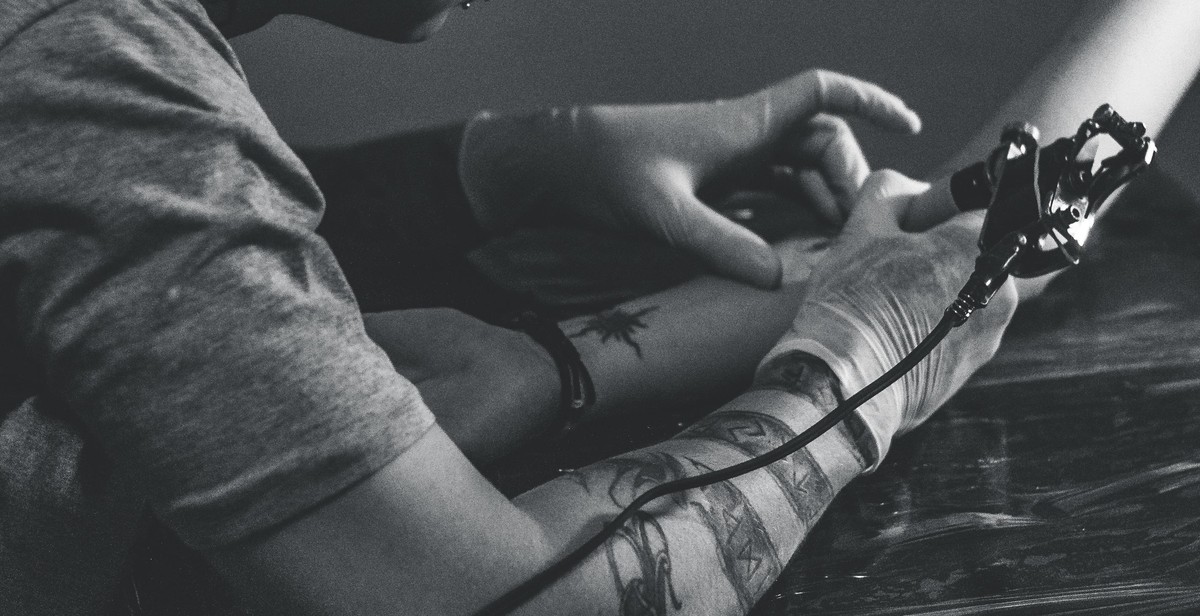How to Get a Tattoo Apprenticeship: Steps to Starting Your Journey as a Tattoo Artist
If you have a passion for art and a love for tattoos, becoming a tattoo artist might be the perfect career for you. However, breaking into the industry can be challenging, and many aspiring artists struggle to find a way in. That’s where a tattoo apprenticeship comes in.
Why Get a Tattoo Apprenticeship?
While there are other ways to learn the art of tattooing, an apprenticeship is widely considered the best route. This is because it provides you with hands-on experience and allows you to learn directly from a seasoned professional. It’s an opportunity to gain knowledge and skills that simply can’t be learned from a book or online course.
During your apprenticeship, you’ll learn everything from proper hygiene and safety practices to the technical skills needed to create beautiful, lasting tattoos. You’ll also have the chance to build relationships with other artists and clients, which can be invaluable as you start to establish yourself in the industry.
But how do you go about getting a tattoo apprenticeship? In the following sections, we’ll outline the steps you need to take to start your journey as a tattoo artist.

Step 1: Research Tattoo Shops
If you want to become a tattoo artist, the first step is to find a reputable tattoo shop to apprentice at. This can be a daunting task, but it’s important to take the time to research and find the right fit for you.
What to Look for in a Tattoo Shop
When researching tattoo shops, there are a few things to keep in mind:
- Cleanliness: A clean shop is essential to prevent the spread of infections and diseases. Look for a shop that has a dedicated cleaning staff and follows strict sterilization procedures.
- Artistic Style: Look for a shop that specializes in the style of tattooing you are interested in. Different artists have different strengths, so it’s important to find someone who can help you develop your skills in your preferred style.
- Reputation: Check online reviews and ask other tattoo artists in the area for recommendations. A good reputation is a strong indicator of a quality shop.
- Apprenticeship Program: Not all tattoo shops offer apprenticeships, so make sure to ask if they have a program in place. Some shops may require you to complete a certain amount of hours or have a portfolio of your work before being considered for an apprenticeship.
How to Approach Tattoo Shops
Once you have a list of potential tattoo shops, it’s time to start reaching out and making connections. Here are some tips for approaching tattoo shops:
- Introduce Yourself: Start by introducing yourself to the shop’s manager or owner. Let them know that you are interested in an apprenticeship and ask if they have any openings.
- Be Professional: Dress professionally and be respectful when approaching tattoo shops. Remember, you are trying to make a good first impression.
- Show Your Work: If you have a portfolio of your work, bring it with you to show the shop’s manager or owner. This will give them an idea of your artistic style and skill level.
- Be Persistent: Don’t be discouraged if you don’t get an apprenticeship right away. Keep in touch with the shop’s manager or owner and continue to show your interest and dedication.
By taking the time to research tattoo shops and approach them professionally, you can increase your chances of finding the right apprenticeship program to start your journey as a tattoo artist.
Step 2: Build Your Portfolio
Creating a portfolio is an important step in getting a tattoo apprenticeship. Your portfolio showcases your artwork and demonstrates your skill level to potential mentors. It’s essential to put your best foot forward and make a strong first impression.
Creating Your Portfolio
When creating your portfolio, it’s important to showcase a variety of styles and techniques. This shows your versatility as an artist and your ability to adapt to different requests from clients. It’s also important to include both black and white and color pieces.
You can start by gathering your best artwork, whether it’s drawings, paintings, or digital designs. It’s recommended to include at least 15-20 pieces in your portfolio, but don’t include everything you’ve ever created. Be selective and only include your best work.
Organize your portfolio in a professional manner. You can use a binder or create a digital portfolio using websites like Behance or Dribbble. Make sure to include your name, contact information, and a brief introduction about yourself and your art style at the beginning of your portfolio.
What to Include in Your Portfolio
When building your portfolio, it’s important to showcase your technical skills, creativity, and ability to design custom pieces for clients. Here are some elements to include:
- Drawings and sketches
- Paintings or digital designs
- Tattoo designs you’ve created
- Custom pieces you’ve created for clients
- Before and after photos of tattoos you’ve done
- Any awards or recognition you’ve received for your artwork
Make sure to include a variety of pieces that showcase different styles, techniques, and subject matter. This will demonstrate your versatility and show potential mentors that you’re capable of creating a wide range of tattoos.
| Tip: | Consider asking a professional tattoo artist to review your portfolio and provide feedback. They can offer valuable insights on how to improve your work and make your portfolio more appealing to potential mentors. |
|---|
Step 3: Apply for an Apprenticeship
Applying for a tattoo apprenticeship can be a daunting task, but it’s an essential step towards starting your journey as a tattoo artist. Here’s what you need to know about how to apply:
How to Apply to a Tattoo Apprenticeship
First and foremost, research tattoo studios in your area and find out if they offer apprenticeships. Some studios will have information on their websites, while others may require you to inquire in person or via email.
Once you’ve found a studio that offers apprenticeships, make sure you meet their requirements. This may include having a portfolio of your artwork, being at least 18 years old, having a high school diploma or GED, and having a passion for tattooing.
When you’re ready to apply, be sure to follow the application process outlined by the studio. This may include submitting a resume, cover letter, and your portfolio of artwork. Make sure to highlight your passion for tattooing and your willingness to learn.
What to Expect During the Interview
If your application is accepted, you’ll likely be invited for an interview with the studio. Here’s what you can expect:
- The interview will likely be conducted by the studio owner or a senior tattoo artist.
- You’ll be asked questions about your artwork, your passion for tattooing, and your willingness to learn.
- You may be asked to bring in a physical portfolio of your artwork to showcase your skills.
- The interview may also include a practical component, where you’ll be asked to demonstrate your ability to set up and take down tattoo equipment.
- Be sure to dress professionally and arrive on time for your interview.
Remember, the interview is your chance to showcase your passion for tattooing and your willingness to learn. Be confident, ask questions, and show that you’re dedicated to starting your journey as a tattoo artist.
| Tip: | Consider reaching out to other tattoo artists or apprentices in your area for advice on the application and interview process. |
Step 4: Complete Your Apprenticeship
Once you have found a tattoo artist who is willing to take you on as an apprentice, you will begin the journey of learning the art of tattooing. Your apprenticeship will be a mix of hands-on training, observation, and studying. It is important to understand that your apprenticeship will be a long and intense process, but it is necessary to become a successful tattoo artist.
What to Expect During Your Apprenticeship
During your apprenticeship, you will be working closely with your mentor to learn all aspects of tattooing. This will include:
- Preparing the tattoo station
- Sterilizing equipment
- Creating stencils
- Applying tattoos
- Caring for clients and their tattoos
- Learning about the business side of tattooing
Expect to spend most of your time observing and assisting your mentor. You will also be expected to complete tasks such as cleaning and organizing the studio, answering phones, and scheduling appointments.
How Long Does an Apprenticeship Take?
The length of your apprenticeship will vary depending on your mentor and the state you are in. In most states, an apprenticeship lasts about two years, but it can take longer. During this time, you will need to complete a certain number of hours of training and pass a test to become licensed.
It is important to remember that becoming a successful tattoo artist takes time, dedication, and hard work. Your apprenticeship is just the beginning of your journey, and it is up to you to continue learning and growing as an artist.

Conclusion
Becoming a tattoo artist is a challenging but rewarding journey, and getting a tattoo apprenticeship is the first step towards achieving your dream. Remember that the tattoo industry is highly competitive, so be prepared to work hard and put in the necessary effort to stand out from the crowd.
Start by doing your research and finding reputable tattoo shops in your area. Reach out to them and express your interest in becoming an apprentice. Be prepared to showcase your portfolio and demonstrate your passion and dedication for the craft.
It’s also important to invest in your education and skills by attending workshops, seminars, and conferences. This will help you stay up-to-date with the latest trends and techniques in the industry.
Lastly, don’t forget to network and build relationships with other tattoo artists and industry professionals. Join online communities and attend events to expand your knowledge and connect with like-minded individuals.
Remember, getting a tattoo apprenticeship is just the beginning of your journey as a tattoo artist. With hard work, dedication, and a passion for the craft, you can achieve your dream of becoming a successful tattoo artist.
